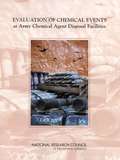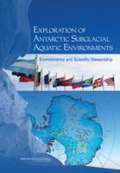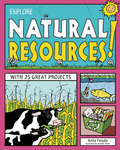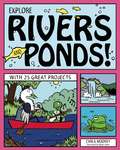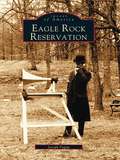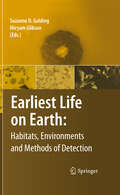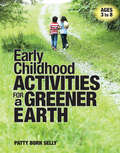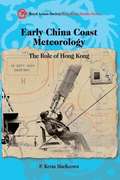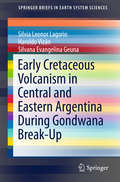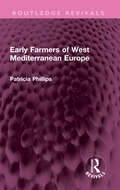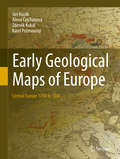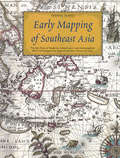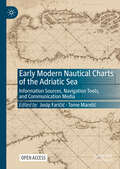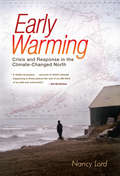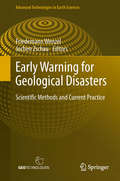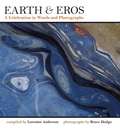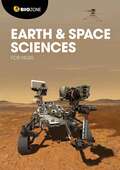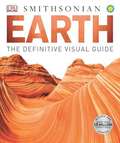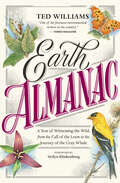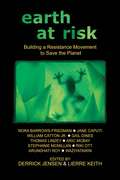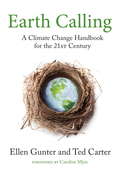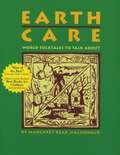- Table View
- List View
EVALUATION OF CHEMICAL EVENTS at Army Chemical Agent Disposal Facilities
by Committee on Evaluation of Chemical Events at Army Chemical Agent Disposal FacilitiesFor over a decade the Army has been carrying out a program aimed at the destruction of accumulated chemical weapons stored at several sites. While destruction by incineration has been successful, several incidents -- called chemical events -- occurred during the disposal process or decontamination activities that raised some public concerns about the safety of operations of three third generation incineration facilities. As a result, the Congress asked the NRC to investigate whether the incidents provide information useful to help ensure safe operation of the future sites. This book presents an analysis of causes of and responses to past chemical events, implications of such events for ongoing and future demilitarization activities, and recommendations for preparing for future events.
EXPLORATION OF ANTARCTIC SUBGLACIAL AQUATIC ENVIRONMENTS: Environmental and Scientific Stewardship
by National Research Council of the National AcademiesAntarctica is renowned for its extreme cold; yet surprisingly, radar measurements have revealed a vast network of lakes, rivers, and streams several kilometers beneath the Antarctic ice sheet. Sealed from Earth's atmosphere for millions of years, they may provide vital information about microbial evolution, the past climate of the Antarctic, and the formation of ice sheets, among other things. The next stage of exploration requires direct sampling of these aquatic systems. However, if sampling is not done cautiously, the environmental integrity and scientific value of these environments could be compromised. At the request of the National Science Foundation, this National Research Council assesses what is needed to responsibly explore subglacial lakes. Exploration of Antarctic Subglacial Aquatic Environments concludes that it is time for research on subglacial lakes to begin, and this research should be guided by internationally agreed upon protocols. The book suggests an initial protocol, which includes full characterization of the lakes by remote sensing, and minimum standards for biological and other types of contamination.
EXPLORE NATURAL RESOURCES!
by Anita Yasuda Jennifer KellerWhat are natural resources? And why is it important to prevent natural resources from being wasted? Explore Natural Resources! answers these questions. The 25 projects inspire young readers ages 6-9 to have fun while learning why natural resources are important to all living things and how every child can take care of the earth's resources through reducing, reusing, and recycling. Kids will read about national parks and early environmentalists, Earth celebrations, and the science behind renewable and nonrenewable resources. With projects and experiments ranging from making a wind-powered car and creating a solar catcher to calculating their water footprint, children will discover that everything comes from the earth. Projects are easy-to-follow, require little adult supervision, and use commonly found household products, many from the recycling box. Through a mixture of fun facts, trivia, jokes, comics, and hands-on activities, kids will Explore Natural Resources! and gain an appreciation of earth's resources, from its vast oceans to its open skies. Explore Natural Resources! meets common core state standards in language arts for reading informational text and literary nonfiction and is aligned with Next Generation Science Standards. Guided Reading Levels and Lexile measurements indicate grade level and text complexity.
EXPLORE RIVERS AND PONDS!
by Bryan Stone Carla MooneyFrom puddles to lakes, streams to rivers, and bogs to swamps, each body of water contains an amazing treasure chest of life. There is an abundance of plant and animal life hiding in every freshwater habitat. But freshwater habitats are also fragile and valuable resources that need to be protected and conserved.Explore Rivers and Ponds! with 25 Great Projects, introduces kids to the fascinating world of freshwater habitats and the creatures they contain. Combining hands-on activities with ecology and science, kids will have fun learning about the freshwater biome, including lakes and ponds, streams and rivers, and wetlands. Entertaining illustrations and fascinating sidebars illuminate the topic and bring it to life, while Words to Know highlighted and defined within the text reinforce new vocabulary. Projects include assembling an ecologist's field kit, creating a fishless aquarium, pouring casts of animal tracks, and building a watershed replica. Additional materials include a glossary, and a list of current reference works, websites, museums, and science centers.
Eagle Rock Reservation (Images of America)
by Joseph FaganFounded in 1895, the Essex County Park Commission was the first county park system in the nation. That year, the commission began its management of Eagle Rock. The reservation was designed by renowned architect Frederick Law Olmsted Sr., who also designed Central Park in New York City and the Capitol Grounds in Washington, D.C. Evident characteristics of the architect within the park are the winding roads, natural blended waterways, open fields, and overlooks, all of which combine to attract thousands of visitors each year. Eagle Rock Reservation explores many interesting and little-known facts about the park. Readers are introduced to Llewellyn Haskell, the founder of nearby Llewellyn Park, who first purchased land at Eagle Rock. Seen is the trolley that once served Eagle Rock as it emerged as a popular resort area. Included are the park's view of the New York City skyline and the Hundred Steps to Eagle Rock, the same steps that were ascended by visitors nearly one hundred years ago. Also seen is a never-before-published lab note written by Thomas Edison, documenting World War I experiments he conducted for the U.S. Navy at Eagle Rock.
Earliest Life on Earth: Habitats, Environments and Methods of Detection
by Suzanne D. Golding Miryam GliksonThis volume integrates the latest findings on earliest life forms, identified and characterised in some of the oldest rocks on Earth. New material from prominent researchers in the field is presented and evaluated in the context of previous work. Emphasis is placed on the integration of analytical methods with observational techniques and experimental simulations. The opening section focuses on submarine hot springs that the majority of researchers postulates served as the cradle of life on Earth. In subsequent sections, evidence for life in strongly metamorphosed rocks such as those in Greenland is evaluated and early ecosystems identified in the well preserved Barberton and Pilbara successions in Southern Africa and Western Australia. The final section includes a number of contributions from authors with alternate perspectives on the evidence and record of early life on Earth. Audience This volume will be valuable to researchers and graduate students in biogeosciences, geochemistry, paleontology and geology interested in the origin of life on earth.
Early Childhood Activities for a Greener Earth
by Patty Born SellyMore than 100 classroom activities to help children learn about and care for the earthEducate young children about the environment through experience and play. These activities encourage children to develop a sense of wonder, curiosity, and joy for nature. Each chapter focuses on a common and important environmental topic-from waste reduction and recycling to air quality, weather and climate change, and energy reduction-and provides information to help you present these topics to children in developmentally appropriate ways. Early Childhood Activities for a Greener Earth will help you excite children, engage families, and encourage your community to be green.Early Childhood Activities for a Greener Earth is a 2014 Teachers' Choice Award for the Classroom winner!
Early China Coast Meteorology
by P. Kevin MackeownIn this colourful story of the Hong Kong Observatory, P. Kevin MacKeown takes us through the dev
Early Cretaceous Volcanism in Central and Eastern Argentina During Gondwana Break-Up
by Silvia Leonor Lagorio Haroldo Vizán Silvana Evangelina GeunaThis book analyzes the Early Cretaceous volcanic processes in Misiones Province and in Sierra Chica de Córdoba (Argentina). The volcanism in Misiones is tholeiitic and belongs to the Parana Magmatic Province (PMP), which extends throughout South America. In contrast, the volcanism in Córdoba is geographically restricted and of alkaline nature, representing a potassic locality peripheral to the PMP. To understand the causes of and geodynamic processes involved in these volcanisms, a new 40Ar /39Ar of 129. 6 ± 1 Ma of a trachyte from Sierra Chica de Córdoba is presented. This dating points out that the volcanism in Sierra Chica de Córdoba slightly postdates PMP lavas. Moreover, complementary geochemical analyses from Misiones Province are presented and compared with those from the whole PMP in order to characterize its source
Early Farmers of West Mediterranean Europe (Routledge Revivals)
by Patricia PhillipsOriginally published in 1975, this book traces the subsistence methods of Mediterranean country dwellers from the mid-seventh millennium B. C. (in radio-carbon year) to the beginning of the Bronze Age. It illustrates the change from Mesolithic to Neolithic cultures over a wide area: (South of France, Italy, Corsica, Sardinia and Spain). The book explores the human societies that lived through this important period of change and adaptation. From their density of settlement, site locations and material culture, hypotheses can be made as to population size and structure. There are sufficient clues in the archaeological record to make possible very cogent comparisons between the hunter-gatherers of the pre-pottery era in West Mediterranean Europe and their distant descendants on the eve of the Bronze Age. How these changes came about, and their effect on Neolithic people as individuals and members of human society form the central part of the book.
Early Geological Maps of Europe
by Jan Kozák Alena Čejchanová Zdeněk Kukal Karel PošmournýThis book focuses on the presentation and evaluation of geological maps of the Central Europe from 1750 up to 1840. Milestones in presentation of stratigraphy and tectonics and new geological models on such maps will be underlined. Map descriptions contain fundamentals editorial data as well as the map author's affiliation and biographies. It represents for the region of the Central Europe the first work of this type. Geological maps represent geological synthesis and indicate the level of geological knowledge throughout history. They serve as guidelines for an economic utilization of mineral deposits and further geological investigation.
Early Mapping of Southeast Asia
by Thomas SuarezEarly Mapping of Southeast Asia follows the story of mapmaking, exploration and colonization in Asia from the 16th to the 19th centuries. It surveys Southeast Asia's geography and civilizations, its maps and their influence on Western worldviews, as well as the image of Southeast Asia in the eyes of its neighbors.
Early Modern Nautical Charts of the Adriatic Sea: Information Sources, Navigation Tools, and Communication Media
by Josip Faričić Tome MarelićThis Open Access book provides a comprehensive and multi-layered understanding of the development of Adriatic Sea nautical cartography from its beginnings in the late Middle Ages to the implementation of geodetic and hydrographic surveys in the early nineteenth century. During the early modern period, the importance of nautical charts exceeded mere navigational purpose as they also became a medium for conveying an extensive array of socioeconomic information and messages. The authors examine how the geographical characteristics and social elements of the Adriatic Sea and its surroundings were observed, understood, and cartographically represented in accordance with contemporary scientific, technological, socioeconomic, cultural, or political frameworks using various phenomenological viewpoints and methodological techniques. Since the Adriatic Sea has historically functioned as a smaller-scale version of the Mediterranean, its contents transcend its geographical boundaries and are also broadly applicable to other Mediterranean regions.
Early Warming: Crisis and Response in the Climate-Changed North
by Nancy LordIn Shishmaref, Alaska, new seawalls are constructed while residents navigate the many practical and bureaucratic obstacles to moving their entire island village to higher ground. Farther south, inland hunters and fishermen set out to grow more of their own food-and to support the reintroduction of wood bison, an ancient species well suited to expected habitat changes. First Nations people in Canada team with conservationists to protect land for both local use and environmental resilience.In Early Warming, Nancy Lord takes a cutting-edge look at how communities in the North-where global warming is amplified and climate-change effects are most immediate-are responding with desperation and creativity. This beautifully written and measured narrative takes us deep into regions where the indigenous people who face life-threatening change also demonstrate impressive conservation ethics and adaptive capacities. Underpinned by a long acquaintance with the North and backed with scientific and political sophistication, Lord's vivid account brings the challenges ahead for us all into ice-water clarity.
Early Warning for Geological Disasters: Scientific Methods and Current Practice
by Friedemann Wenzel Jochen ZschauThe past years have seen new technologies that could be utilized for early warning and real-time loss estimation. They include self-organizing sensor networks, new satellite imagery with high resolution, multi-sensor observational capacities, and crowd sourcing. From this and improved physical models, data processing and communication methodologies a significant step towards better early warning technologies has been achieved by research. At the same time, early warning systems became part of the disaster management practice for instance in Japan and Indonesia. This book marks the important point where: Research activities continue to improve early warning Experience with applications is expandingAt this critical point in development of early warning for geological disasters it is timely to provide a volume that documents the state-of-the-art, provides an overview on recent developments and serves as knowledge resource for researcher and practitioners.
Earth & Eros
by Robert Michael Pyle Lorraine Anderson Bruce HodgeIn the tradition of The Sense of Wonder by Rachel Carson and On the Loose by Terry and Renny Russell, Earth & Eros combines words and photographs to inspire readers to deepen their connection with the good Earth. The book awakens readers to the full force of eros - life force that connects us to our bodies, other humans, all living beings, and the Earth as a living being.Intended as an antidote to an age obsessed by speed, screens, and machines, this book brings together previously published prose and poetry with 25 fine art landscape photographs to explore the sacred erotic dimension of humans' relationship to the Earth.The writings in Earth & Eros were chosen for their brevity, readability, beauty, and potency, and the photographs for their sensuality. Readers engage with writers such as David James Duncan, Hart Crane, Diane Ackerman, Sherman Alexie, D. H. Lawrence, Mary Oliver, and Pablo Neruda. Some of the pieces of writing are explicitly sexual, while others appreciate the sensuality of tree limbs, seeping water, mushrooms, and ferns. Earth and Eros is beautifully produced and a pleasure to hold and to look at, a book to read and reread slowly, out loud.
Earth & Space Sciences for NGSS
by Lissa Bainbridge-Smith Sarah Gaze Jillian Mellanby Kent PryorEarth and Space Sciences for NGSS has been specifically written to meet the requirements of the Next Generation Science Standards (NGSS) for high school Earth and Space Sciences (HS-ESS). Users of this truly NGSS-aligned resource can be assured that the three dimensions (Disciplinary Core Ideas, Science and Engineering Practices, and Crosscutting Concepts) form the basis of each activity. Structured on the Disciplinary Core Ideas of the NGSS framework, this title provides a flexible approach to delivering NGSS. BIOZONE’S high-quality, infographics and inquiry-driven pedagogical approach inspires students to be curious about the scientific world. Our unique, interactive worktext approach encourages direct interaction with the content, allowing students to record their answers within the context of the stimulus material and form a record of work for quick and easy revision.
Earth (Second Edition)
by Graham R. Thompson Mark HendrixCreated through a "student-tested, faculty-approved" review process from nearly 70 students and faculty, EARTH is an engaging and accessible solution to accommodate the diverse lifestyles of today's learners. The 2nd edition of EARTH has been thoroughly revised by Marc S. Hendrix of the University of Montana to ensure that the new edition is even more student-friendly and accessible than its predecessor. Over 75 new photos and 50 reworked illustrations offer an enhanced visual learning experience for a subject that is visual by its nature. EARTH presents a rich overview of all Earth-related disciplines-from geology, hydrology, and oceanography to meteorology and astronomy. EARTH explores the physical attributes of planet Earth and its environment, emphasizing the human choices we have made, and exploring the physical consequences of those choices in the context of Earth systems.
Earth (Second Edition)
by James F. Luhr Jeffrey E. PostEarth: The Definitive Visual Guide is an extraordinary survey of our planet produced in collaboration with the Smithsonian Institution. This stunning reference includes detailed, illustrated information about everything that makes up our planet, from Mount Kilimanjaro to the Antarctic ice sheet, as well as descriptions of more than four hundred of the Earth's most significant, unusual, greatest, and most dangerous features. <P><P><i>Advisory: Bookshare has learned that this book offers only partial accessibility. We have kept it in the collection because it is useful for some of our members. Benetech is actively working on projects to improve accessibility issues such as these.</i>
Earth 2020: An Insider's Guide To A Rapidly Changing Planet
by Philippe TortellFifty years have passed since the first Earth Day, on 22 April 1970. This accessible, incisive and timely collection of essays brings together a diverse set of expert voices to examine how the Earth’s environment has changed over this past half century, and what lies in store for our planet over the coming fifty years. <p><p> Earth 2020: An Insider’s Guide to a Rapidly Changing Planet responds to a public increasingly concerned about the deterioration of Earth’s natural systems, offering readers a wealth of perspectives on our shared ecological past, and on the future trajectory of planet Earth. <p> Written by world-leading thinkers on the front-lines of global change research and policy, this multi-disciplinary collection maintains a dual focus: some essays investigate specific facets of the physical Earth system, while others explore the social, legal and political dimensions shaping the human environmental footprint. In doing so, the essays collectively highlight the urgent need for collaboration across diverse domains of expertise in addressing one of the most significant challenges facing us today. <p> Earth 2020 is essential reading for everyone seeking a deeper understanding of the past, present and future of our planet, and the role of humanity in shaping this trajectory.
Earth Almanac: A Year of Witnessing the Wild, from the Call of the Loon to the Journey of the Gray Whale
by Ted WilliamsNoted nature writer Ted Williams invites readers along on a year-long immersion in the wild and fleeting moments of the natural world, from winter candy and spring quackers to summer&’s scarlet farewell and autumn reveilles. This beautifully crafted collection of short, seasonal essays combines in-depth information with evocative descriptions of nature&’s marvels and mysteries. Williams explains the weather conditions that bring out the brightest reds in autumn leaves, how hungry wolf spiders catch their prey, and why American goldfinches wait until late July or August to build their nests. In the tradition of Thoreau, Carson, and Leopold, Ted Williams&’s writing stands as a testament to the delicate balance of nature&’s resilience and fragility, and inspires readers to experience the natural world for themselves and to become advocates for protecting and preserving the amazing diversity and activity found there.
Earth At Risk: Building A Resistance Movement To Save The Planet
by Derrick Jensen Lierre KeithThe annual conference Earth at Risk: Building a Resistance Movement to Save the Planet features environmental thinkers and activists who are willing to ask the hardest questions about the seriousness of the planet's situation, and this book presents an impassioned critique of the dominant culture from every angle. Speakers from the conference are featured in this volume and include William Catton, who explains ecological overshoot; Thomas Linzey, who gives a fiery call for community sovereignty; Jane Caputi, who exposes patriarchy's mythic dismemberment of the goddess; Aric McBay, who discusses historically effective resistance strategies; and Stephanie McMillan, who takes down capitalism. One by one, they build an unassailable case that the rich should be deprived of their ability to steal from the poor and the powerful of their ability to destroy the planet. These speakers offer their ideas on what can be done to build a real resistance movement: one that includes all levels of direct action that can actually match the scale of the problem. Also included are the speakers Derrick Jensen, Arundhati Roy, Rikki Ott, Gail Dines, Waziyatawin, Lierre Keith, and Nora Barrows-Friedman.
Earth Calling
by Caroline Myss Ted Carter Ellen GunterOur earliest mythologies tell us we all start as a little bit of dirt. These stories carry a profound message: each of us is born with a deep and abiding connection to the earth, one that many of us have lost touch with. The Silent Spring for today's environmental activists, this book offers an invitation to reestablish our relationship with nature to repair our damaged environment. Chapter 1 examines the threats to the planet's health through the lens of the human energy system known as the chakras, describing how the broken first chakra relates to our disconnection from our biosphere. Chapter 2 shows how our current environmental crises--global warming, climate change, dwindling water resources, natural disasters such as wildfires and hurricanes--represent severe manifestations of our disconnection from the earth.Chapter 3 describes how the preponderance of oil in our culture--especially agribusiness--compounds this disconnection, from our dependence on other countries for our energy, to current issues of oil depletion, peak oil, and fracking, to the dumbing down of our agricultural polyculture.Chapter 4 explains how the most basic building blocks of our nourishment--seeds--are being compromised with a loss of biodiversity and rise of GMOs, and how that adversely affects the farmers whose sacred connection to the land has in many cases been severed. Chapter 5 describes the ways in which we as individuals can begin to wake up to climate activism as a spiritual practice. This chapter includes specific activities that you can use to implement change and heal your own connection to the earth. By learning and practicing ritual and understanding the earth's rhythms and seasonal rites of passage, each of us can find unique ways to heal our own connections and help others heal theirs. Chapter 6 brings to life Goethe's wisdom: "Knowing isn't enough; neither is being willing. We must do," by providing strategies and resources for exploring how each of us can find our own Earth Calling, then anchoring that calling with the only force that ignites change: Action.From the Trade Paperback edition.
Earth Care: World Folktales to Talk About
by Margaret Read MacDonaldWhile working on my collection Peace Tales: World Folktales to Talk About, I began to keep a folder of stories about our relationship to the Earth. In the years since then I have read through many folktale collections, searching always for those stories which would speak pointedly to us.
